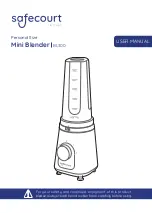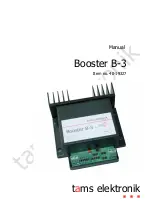
Advanced Configuration Options
46
Model 2160 Series Getting Started Guide
4 • Web configuration
ually or dynamically using
Generic VLAN Routing Protocol (GVRP)
. However, if you want a port on this
Model 2160 to participate in one or more VLANs, but none of the intermediate network devices nor the host
at the other end of the connection supports VLANs, then you should add this port to the VLAN as an
untagged port.
Note
VLAN-tagged frames can pass through VLAN-aware or VLAN-
unaware network inter-connection devices, but the VLAN tags
should be stripped off before passing it on to any end-node host that
does not support VLAN tagging.
•
VLAN Classification
- When the Model 2160 receives a frame, it classifies the frame in one of two ways. If
the frame is untagged, the Model 2160 assigns the frame to an associated VLAN (based on the default
VLAN ID of the receiving port). But if the frame is tagged, the Model 2160 uses the tagged VLAN ID to
identify the port broadcast domain of the frame.
•
Port Overlapping
- You can use port overlapping to allow access to commonly shared network resources
among different VLAN groups, such as file servers or printers.
•
Untagged VLANs
- Untagged (or static) VLANs are typically used to reduce broadcast traffic and to
increase security. A group of network users assigned to a VLAN form a broadcast domain that is separate
from other VLANs configured on the Model 2160. Packets are forwarded only between ports that are desig-
nated for the same VLAN. Untagged VLANs can be used to manually isolate user groups or subnets.
•
Port VID (PVID)
- A PVID is a VLAN ID assigned to untagged frames received on the interface. (Default:
1). If an interface is not a member of VLAN 1 and you assign its PVID to this VLAN, the interface will
automatically be added to VLAN 1 as an untagged member. For all other VLANs, an interface must first be
configured as an untagged member before you can assign its PVID to that group.
•
Link Type
- The Link Type determines the types of frames the port can accept.
Access
means the port can
only receive or send untagged frame types.
Trunk
means that the port can only receive or send tagged frame
types.
















































